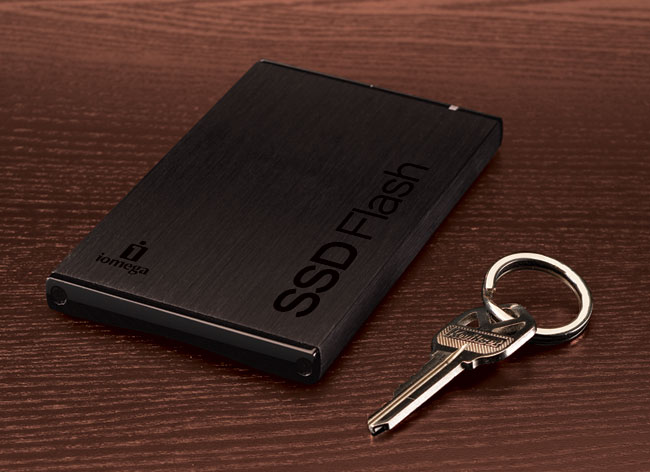
What do you do when a thumb drive won’t quite handle 80GB of photos from gallivanting all over Europe, but you can’t risk putting six months of your life on a failure-prone magnetic drive? Slap them on Iomega’s new SSD Flash drive, of course. At warp speed.
It may not look quite as futuristic as OCZ’s Enyo 3.0 (it’s pretty much a black slab), but it’s faster, thinner, and depending on where you go, just as cheap. The company’s first foray into external SSDs weigh only a quarter of a pound and measures only 0.35 inches thick, but packs up to 256GB of storage, and with a USB 3.0 connection, can snap data back and forth at speeds up 10 times what magnetic drives can approach. For the 256GB model, the fastest in the line, that translates to 265mbps read speeds, and 215mbps write speeds.

Iomega’s complementary software suite include v.Clone for capturing drive images, a free year of Trend Micro Internet Security, Iomega QuickProtect for file-level backup, and 2GB of free online backup through MozyHome.
The smallest 64GB model will sell for $229, while the 128GB hits $399, and the 256GB, a whopping $749, putting it about on par with on par the Enyo.


